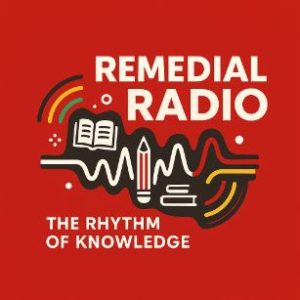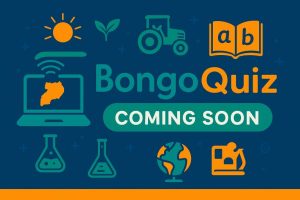Explore various ways of studying geography, learn how to find geographic information, and understand the advantages and disadvantages of each source to enhance your geographical knowledge.
Contents
Introduction
Geography is a dynamic and diverse field that examines the physical features of the Earth, as well as the human societies spread across it. Studying geography helps us understand the world around us, from the landscapes we live in to the global patterns of human activity. To effectively study geography, one must know how to find accurate and relevant geographic information. This blog will explore different ways to study geography, examining the advantages and disadvantages of each source of information. By understanding these methods, you can enhance your geographical knowledge and become a more informed global citizen.
Ways of Studying Geography
1. Textbooks
Textbooks have long been a staple in studying geography, providing comprehensive overviews of various topics.
Advantages:
- Well-structured and easy to follow.
- Authored by experts, ensuring reliable and accurate information.
- Includes diagrams, maps, and case studies that enhance understanding.
- Textbooks offer a structured learning path that guides students through topics in a logical sequence, helping to build foundational knowledge before progressing to more complex concepts.
- Supplementary Resources
- Many textbooks come with supplementary resources such as practice questions, online modules, and teacher’s guides, enhancing the learning experience.
- Standardized Content
- Textbooks are often standardized across educational institutions, ensuring that all students receive a consistent and comprehensive education in geography.
- Accessibility
- Textbooks are widely available and can be accessed without the need for technology, making them a reliable resource for students in areas with limited internet access.
- Physical Tangibility
- The physical nature of textbooks can aid in learning retention. Students can highlight, annotate, and refer back to sections easily, which can enhance memory retention.
- Support for Exam Preparation
- Textbooks are designed to align with curriculum standards and examination formats, making them valuable tools for students preparing for tests and exams.
- Reusability
- Textbooks can be reused over multiple academic years, making them a cost-effective resource for schools and students alike.
Disadvantages:
Lack of Interactivity
- Textbooks lack interactive elements such as videos, simulations, and interactive maps, which can make learning less engaging compared to digital resources.
Heavy and Bulky
- Physical textbooks can be heavy and cumbersome to carry, which may be inconvenient for students who have to transport them daily.
Limited Perspective
- Textbooks may present information from a limited perspective or bias, which can restrict students’ understanding of diverse geographical viewpoints and theories.
Environmental Impact
- The production of textbooks involves significant use of paper and other resources, contributing to environmental concerns such as deforestation and waste.
Cost
- The cost of purchasing new textbooks can be high, posing a financial burden on students and educational institutions.
Potential for Outdated Information
- While textbooks provide foundational knowledge, they may not include the latest research findings or current events, necessitating supplementary resources to stay updated.
Static Content
- Unlike digital resources that can be easily updated, textbooks are static and require new editions to incorporate changes, which can be a slow and costly process.
Limited Engagement
- The traditional format of textbooks may not cater to different learning styles, such as those who benefit from auditory or kinesthetic learning methods.
Dependency on a Single Author’s Expertise
- The quality and accuracy of information can vary depending on the expertise and perspective of the textbook’s author(s), potentially limiting the breadth of knowledge covered.
Inflexibility
- Textbooks often follow a rigid structure, which can limit the ability of educators to tailor content to the specific needs and interests of their students.
- Can become outdated quickly as new geographical data emerges.
- Limited in scope, often covering broad topics rather than specific, up-to-date details.
2. Online Databases and Journals
Access to online databases and academic journals is crucial for in-depth geographical research.
Advantages:
- Provides access to the latest research and data.
- Includes peer-reviewed articles, ensuring high-quality information.
- Wide range of topics and case studies available.
Disadvantages:
- Access may require subscriptions or institutional affiliations.
- Can be complex and difficult for beginners to understand without prior knowledge.
3. Geographic Information Systems (GIS)
GIS technology allows users to analyze and visualize geographic data in detail.
Advantages:
- Powerful tool for spatial analysis and mapping.
- Interactive and user-friendly interfaces.
- Real-time data updates provide current information.
Disadvantages:
- Requires training and technical skills to use effectively.
- Software can be expensive and resource-intensive.
4. Fieldwork
Fieldwork involves collecting data and observations directly from the environment.
Advantages:
- Provides hands-on experience and real-world insights.
- Encourages critical thinking and problem-solving.
- Allows for the collection of primary data specific to the study area.
Disadvantages:
- Time-consuming and potentially expensive.
- Can be affected by weather and other external factors.
5. Maps and Atlases
Maps and atlases are essential tools for visualizing geographic information.
Advantages:
- Easy to use and understand.
- Provides a visual representation of data, making complex information more accessible.
- Useful for identifying spatial patterns and relationships.
Disadvantages:
- Static maps may lack detail and can become outdated.
- May not provide context or explanations for the data presented.
6. Satellite Imagery
Satellite imagery offers a bird’s-eye view of the Earth’s surface.
Advantages:
- Provides up-to-date and detailed images of large areas.
- Useful for monitoring environmental changes and natural disasters.
- Available through various platforms, often for free.
Disadvantages:
- Requires interpretation and analysis skills.
- Can be limited by cloud cover and other atmospheric conditions.
7. Documentaries and Educational Videos
Visual media such as documentaries can make learning geography engaging and informative.
Advantages:
- Visually appealing and easy to understand.
- Can cover a wide range of topics in an engaging format.
- Often includes interviews with experts and on-location footage.
Disadvantages:
- Information may be simplified or dramatized for entertainment purposes.
- Limited depth compared to academic sources.
Conclusion
Studying geography requires a multifaceted approach to gather, analyze, and interpret geographic information. Each source of information, from textbooks to GIS technology, offers unique advantages and disadvantages. By understanding these methods, students and enthusiasts can choose the most suitable resources for their needs, enhancing their geographical knowledge and appreciation of the world. Whether through traditional textbooks or cutting-edge technology, the study of geography opens up a deeper understanding of our planet and the complex interactions within it.
FAQs on the methods of studying geography
- What is the best way to start studying geography?
- Begin with textbooks and online resources to build a foundational understanding, then explore more specialized tools like GIS and fieldwork as you progress.
- How can I access online databases for geography research?
- Many universities and public libraries offer access to online databases. Some resources may also be available for free through open-access journals and government websites.
- Why is GIS important in geography?
- GIS allows for detailed spatial analysis and visualization of geographic data, making it a powerful tool for understanding patterns and relationships in the environment.
- What are the benefits of fieldwork in geography?
- Fieldwork provides hands-on experience, real-world insights, and the opportunity to collect primary data specific to your study area.
- How can I use satellite imagery in my geographical studies?
- Satellite imagery can be accessed through platforms like Google Earth and NASA’s Earth Observatory, and can be used to monitor environmental changes, map land use, and more.
- Are documentaries a reliable source of geographic information?
- While documentaries can be informative and engaging, it’s important to cross-reference the information with academic sources to ensure accuracy.
- What are the limitations of using maps and atlases?
- Maps and atlases may become outdated and often lack detailed explanations, so they should be used in conjunction with other sources of information.
- Can I study geography without access to expensive software?
- Yes, there are many free resources available online, including educational websites, open-access journals, and free versions of GIS software.
- What should I consider when choosing a source of geographic information?
- Consider the source’s credibility, the depth and relevance of the information, and your own level of expertise and specific needs.
- How can I keep my geographic knowledge up to date?
- Regularly read academic journals, follow reputable news sources, use up-to-date databases, and participate in fieldwork or practical projects to stay current with developments in geography.


Leave a Reply